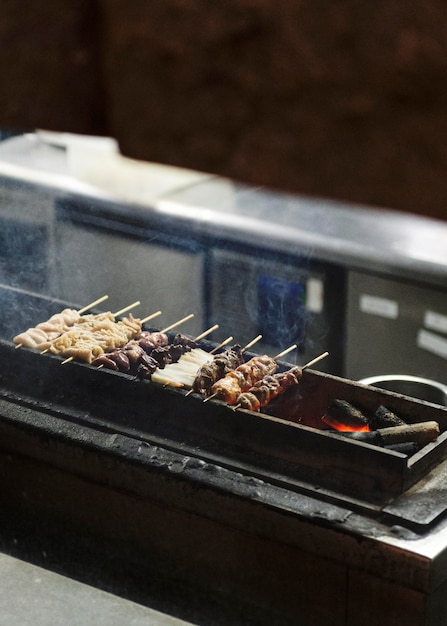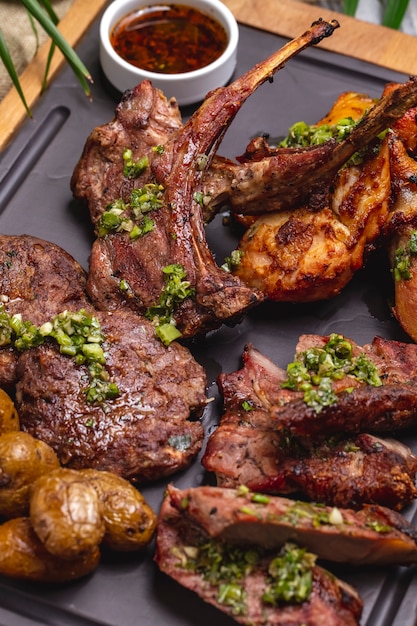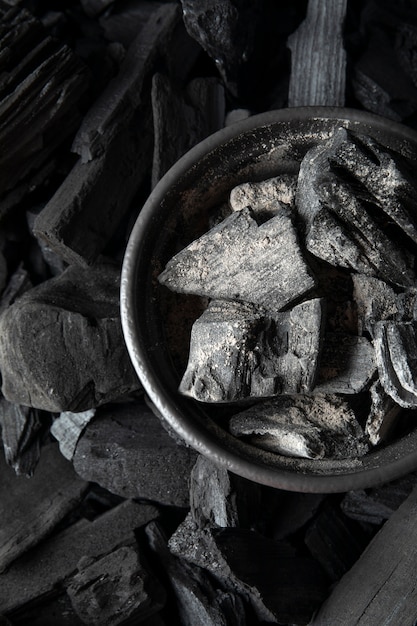How do you soften tough roast beef?
Roast beef is a classic British dish that is loved by many. However, there are times when the meat can turn out tough and chewy, leaving you disappointed and wondering how to salvage it. The good news is that there are several techniques you can employ to soften tough roast beef and make it tender and delicious once again.
The Importance of Choosing the Right Cut
One of the main reasons why roast beef may turn out tough is the choice of cut. Certain cuts of beef, such as rump or brisket, are naturally tougher than others. When cooking roast beef, it is essential to choose a tender cut, such as ribeye or sirloin, to ensure a more tender result.
Marinating for Enhanced Tenderness
Marinating the roast beef before cooking can help break down the connective tissues in the meat, resulting in a more tender texture. A simple marinade comprising a mixture of oil, acid (such as vinegar or lemon juice), herbs, and spices can work wonders in tenderizing the meat. Allow the beef to marinate for at least a few hours or overnight for optimal results.
Tip: Consider using Worcestershire sauce in your marinade. Its umami flavors can further enhance the tenderness of the roast beef.
Slow Cooking for Tender Results
Another effective method for softening tough roast beef is slow cooking. By cooking the beef for an extended period at a low temperature, the collagen in the meat breaks down, resulting in a tender and juicy texture. You can use a slow cooker or oven for this technique. Simply place the beef in a roasting pan or slow cooker, add some liquid (such as beef broth or red wine) for added moisture, and let it cook slowly over several hours.
The Power of Resting and Slicing
Once the roast beef is cooked to your desired doneness, it is crucial to let it rest before slicing. Allowing the meat to rest for about 10-15 minutes helps retain its juices and makes it easier to slice. When slicing the roast beef, make sure to cut against the grain. This technique cuts through the muscle fibers and results in more tender slices.
Using Mechanical Tenderizers
If you find yourself with a particularly tough piece of roast beef, you can turn to mechanical tenderizers for assistance. These devices use small blades or spikes to break down the tough fibers of the meat, resulting in increased tenderness. However, be cautious when using such tools, as improper handling or over-tenderizing can turn the meat mushy.
Additional Tips for Tender Roast Beef
To ensure the best possible outcome when cooking roast beef, consider the following additional tips:
- Season generously: Use a combination of salt, pepper, and other herbs or spices to enhance the flavors of the meat.
- Preheat the oven: Make sure your oven is preheated to the correct temperature before putting the roast beef in to ensure even cooking.
- Use a meat thermometer: Invest in a good quality meat thermometer to accurately monitor the internal temperature of the beef. This will help you achieve the desired level of doneness without overcooking.
- Slice thinly: Thinly sliced roast beef tends to be more tender and easier to chew.
In conclusion, there are various methods you can employ to soften tough roast beef and transform it into a melt-in-your-mouth delight. By choosing the right cut, marinating, slow cooking, resting, and using mechanical tenderizers when necessary, you can achieve a tender and flavorful roast beef that will impress even the most discerning palates. Experiment with these techniques and enjoy a perfectly tender roast beef every time.
How do you get beef to fall apart?
If you’ve ever tasted a melt-in-your-mouth, fall-apart-tender piece of beef, you know just how delectable it can be. But achieving that level of tenderness can sometimes be a challenge, especially when working with tougher cuts of meat. Luckily, there are several techniques you can employ to ensure your beef is tender and succulent every time.
Cooking Low and Slow
One of the best ways to achieve tender beef is by cooking it low and slow. This method allows the meat’s connective tissues to break down gradually, resulting in a tender texture. Whether you opt for braising, slow roasting, or using a slow cooker, maintaining a low temperature over an extended period will help your beef become irresistibly tender.
The Power of Marinades
Marinating beef before cooking can also contribute to its tenderness. A marinade not only infuses the meat with flavor but also helps to break down tough muscle fibers. Acidic ingredients such as vinegar, citrus juice, or yogurt work particularly well in tenderizing beef. For the best results, marinate your beef for at least 30 minutes, or overnight if possible.
The Magic of Moisture
Moisture is another key factor in achieving tender beef. Keeping the meat moist throughout the cooking process can prevent it from drying out and becoming tough. You can accomplish this by basting the beef with pan juices or by adding a liquid, such as broth or wine, to the cooking vessel. Additionally, using a cooking method that traps moisture, such as braising or steaming, can further enhance tenderness.
Tip: For extra flavor and tenderness, consider using a combination of cooking techniques. Start by searing the beef to develop a rich crust, then transfer it to a slow cooker or oven for a low and slow finish.
When it comes to cutting and serving the beef, another important factor to consider is the direction of the grain. To maximize tenderness, always slice the beef against the grain. This method cuts through the muscle fibers, resulting in a more tender bite.
If you’re wondering which cuts of beef are best suited for falling-apart tenderness, look no further than those with a higher amount of connective tissue. Cuts such as brisket, chuck roast, or short ribs are ideal for achieving that fall-apart texture. These cuts benefit from longer cooking times at lower temperatures to transform them into juicy, tender delights.
Why do you soak beef in milk?
Soaking beef in milk has been a longstanding tradition in many cuisines around the world. While it may sound odd, the practice offers several benefits that contribute to a more tender and flavorful meat. Whether you’re preparing a juicy steak or a savory stew, soaking beef in milk can elevate your dish to the next level.
1. Tenderizing properties:
One of the key reasons for soaking beef in milk is its natural tenderizing properties. Milk contains enzymes, such as papain and bromelain, that help break down tough proteins in the meat, making it more tender. These enzymes work by breaking down collagen, the connective tissue found in tougher cuts of beef, resulting in a more succulent texture.
2. Flavor enhancement:
Milk also imparts a unique flavor to the beef. The lactic acid present in milk helps to neutralize certain strong odors and flavors that can be associated with fresh beef. This can be especially beneficial when dealing with older or gamey cuts of meat, as the milk can help mellow out any undesirable tastes.
3. Moisture retention:
Soaking beef in milk helps to retain moisture during the cooking process. The proteins in milk form a protective coating on the surface of the meat, preventing excessive evaporation and ensuring a juicier final result. This is particularly useful when grilling or roasting beef, as it helps prevent the meat from drying out.
“Soaking beef in milk not only improves the texture but also adds a subtle sweetness to the meat.”
If you’re considering trying this technique, here’s a simple guide to get you started:
- Choose your cut of beef: This technique works best with tougher cuts like flank steak, chuck roast, or round steak.
- Place the beef in a shallow dish and cover it completely with milk. Use whole milk for the best results.
- Let the beef soak in the milk for at least 30 minutes, but no more than 24 hours.
- After soaking, rinse the beef under cold water to remove any excess milk.
- Pat the meat dry with paper towels before seasoning or cooking according to your recipe.
Next time you’re planning to cook beef, consider giving this age-old technique a try. It might just be the secret ingredient that takes your dish to new heights!
How do you cook beef without drying it out?
Cooking beef can be a delicious and satisfying experience, but it’s important to know the right methods to avoid drying it out. Whether you’re preparing a hearty roast dinner or a juicy steak, here are some tips to help you achieve perfectly cooked beef every time.
Choosing the right cut
The choice of beef cut plays a vital role in preventing dryness. Opt for cuts with marbling, such as ribeye or sirloin, as the fat helps keep the meat moist during cooking. If you prefer leaner cuts, like fillet or rump, it’s essential to take extra care to prevent drying.
Proper seasoning
Seasoning the beef before cooking is crucial to add flavor and retain moisture. Use a simple rub of salt, pepper, and your favorite herbs and spices. Allow the meat to sit at room temperature for about 30 minutes after seasoning; this helps it cook more evenly.
Cooking techniques
The cooking technique also plays a significant role in preventing dryness. Here are two popular methods:
- Braising: This slow-cooking method involves searing the beef on high heat and then simmering it in a flavorful liquid, such as broth or wine. Braising helps tenderize the meat and locks in moisture.
- Reverse searing: This technique is perfect for achieving a juicy steak. Start by cooking the beef at a low temperature in the oven until it reaches your desired internal temperature. Finish by searing it on high heat for a few minutes to create a delicious crust.
Resting and slicing
After cooking, allow the beef to rest for a few minutes before slicing. This allows the juices to redistribute throughout the meat, resulting in a moist and flavorful dish. Slice against the grain to maximize tenderness.
“Remember, cooking beef to the recommended internal temperature is essential for both safety and taste.”
By following these tips and techniques, you can enjoy tender and succulent beef dishes without worrying about dryness. Experiment with different cuts and cooking methods to find your perfect balance of flavors and textures.
How to Prepare Meat for BBQ
Cutting and Trimming
Properly preparing meat for BBQ begins with cutting and trimming. Start by selecting high-quality cuts of meat from your local butcher or grocery store. For beef, popular choices include ribeye, brisket, and sirloin. When it comes to pork, options like ribs, pork shoulder, and tenderloin work well. Chicken can also be a great choice, with wings, thighs, and drumsticks being especially flavorful.
Once you have your preferred cut, trim any excess fat or silver skin using a sharp knife. This will not only improve the texture of the meat but also prevent flare-ups during grilling.
Marinades and Rubs
The next step in preparing meat for BBQ is marinating or applying a dry rub. Marinades are liquid-based mixtures that infuse flavors into the meat, while rubs consist of a blend of spices that are rubbed onto the surface.
When marinating, ensure all sides of the meat are covered and refrigerate it for at least a few hours or overnight. For dry rubs, simply apply the mixture generously to all surfaces and let it sit for around 30 minutes before grilling.
Grilling Techniques
When it’s time to start grilling, there are a few techniques to keep in mind. Firstly, ensure your grill is preheated to the appropriate temperature. This will vary depending on the type of meat you’re cooking, but generally, a medium-high heat should suffice.
As you place the meat on the grill, avoid overcrowding to allow for even cooking. Keep an eye on the internal temperature using a meat thermometer to ensure it reaches the desired level of doneness. Cooking times will vary depending on the cut and thickness of the meat, so refer to a grilling guide for specific recommendations.
Resting and Serving
Once the meat is cooked to perfection, it’s important to let it rest before serving. This allows the juices to redistribute, resulting in tender and juicy meat. Cover the meat loosely with foil and let it rest for about 5-10 minutes.
When serving, be sure to carve the meat against the grain, as this helps maintain tenderness. Pair your BBQ meat with delicious sides, such as coleslaw, cornbread, or grilled vegetables, for a complete and satisfying meal.
Pro Tip: Experiment with different marinades, rubs, and grilling techniques to discover unique flavor profiles that you and your guests will love.
Conclusion
Getting beef to fall apart and achieve that melt-in-your-mouth tenderness requires a combination of proper cooking techniques and selected cuts of meat. Cooking low and slow, utilizing marinades, keeping the beef moist, and slicing against the grain are essential steps in achieving ultimate tenderness. Experimenting with different methods and cuts of beef will allow you to discover your favorite way to enjoy this mouthwatering texture.



